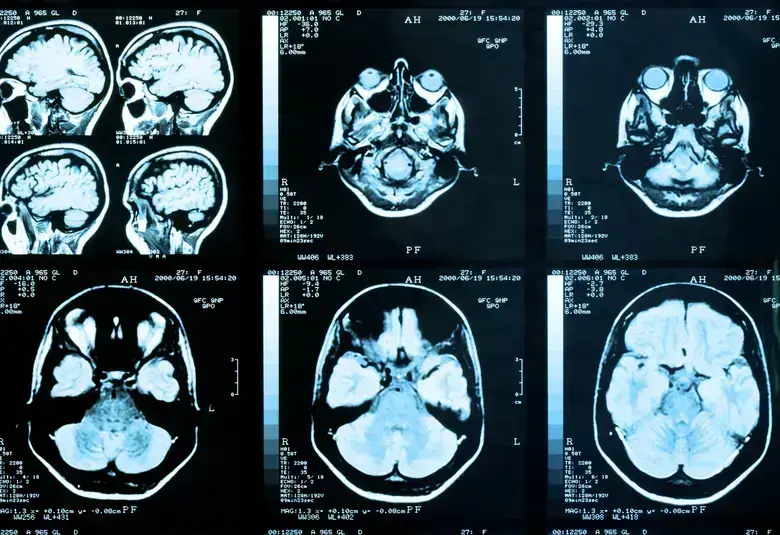Singapore team discovers gene mutations causing neuronal intranuclear inclusion body disease in Parkinson’s Disease patients. How far do these two diseases overlap?
It was 15 years in the making, but Singapore researchers have made inroads into learning more about neuronal intranuclear inclusion body disease (NIID), a rare neurodegenerative disorder presenting symptoms similar to Parkinson’s Disease (PD). The findings from a joint team from National Neuroscience Institute (NNI) and Singapore General Hospital (SGH) will inform screening protocols to detect patients with the condition, and potentially lead to better drugs to control their symptoms.
NIID or PD, or both?
NIID is a slowly progressive neurodegenerative disease caused by a mutation in the NOTCH2NLC gene. Neurodegenerative diseases have no effective cure. They affect brain neurons, which leads to problems in movement or cognition.
In Singapore, most patients are between 40 to 75 years old when they are first diagnosed with NIID. The severe form of NIID is usually seen in older patients. Depending on age and progression of the disease, patients may have symptoms such as dementia, Parkinsonism, poor balance, as well as numbness and weakness in the limbs. Some patients have no symptoms in the early stages and this makes the disease hard to detect until it progresses to an advanced stage.
To get a handle on this rare disease, the research team studied more than 2,000 study participants comprising healthy individuals and patients with PD1. To the team’s surprise, they found the NIID-causing mutations in a number of those diagnosed with PD, suggesting that patients who are carriers of the NIID gene mutation may also exhibit PD symptoms.
Dr Ma Dongrui, Senior Medical Laboratory Scientist, Department of Neurology, SGH, and first author of the study explained, “To our knowledge, this is the first study to report NIID-causing mutations in PD patients. We also found that this group of patients responded to PD medications better than most PD patients do. This shows there must be factors that can influence why some develop PD while many others develop the more severe form of NIID.”
If a PD patient carries the NIID gene mutation, the patient will likely develop cognitive impairment, ataxia (a degenerative disease of the nervous system) and other features of NIID.
Professor Tan Eng King, Deputy Medical Director and Director of Research, NNI added, “With what we know now, it might be beneficial for clinicians to be watchful of early cognitive impairment or imaging evidence that may suggest patients diagnosed with PD have NIID instead. As NIID is caused by a genetic mutation, clinicians may want to look out for family members of PD patients who may show signs of NIID.” Taking prudent measures facilitates early intervention. If a PD patient carries the NIID gene mutation, the patient will likely develop cognitive impairment, ataxia (a degenerative disease of the nervous system) and other features of NIID.
While analysing the NIID gene, the team also discovered a group of healthy participants who had a “milder” form of mutation. Such mutation in the NIID gene could indicate that they are at risk of developing NIID or PD.
“Our findings suggest that many neurodegenerative diseases overlap and may share a common etiology. Finding a common link and uncovering the reason why a similar gene mutation leads to both mild PD and a severe form of NIID can help identify new drugs for these conditions,” explained Prof Tan, who is also the senior author of the study and a Senior Consultant at NNI’s Department of Neurology on SGH Campus.
Finding a common link and uncovering the reason why a similar gene mutation leads to both mild PD and a severe form of NIID can help identify new drugs for these conditions,”
More research to unlock answers to NIID and PD
Armed with these new understandings about NIID, the team plans to follow up with studies to learn more about this disease. One area of study will be whether the broad clinical phenotype of NIID is related to the subtle genetic differences at the NOTCH2NLC gene locus, race or other factors. More importantly, the team hopes to translate current and future findings into new drugs to manage this condition.
The quest for better healthcare outcomes will continue to be the driving force behind the team’s studies. As he looked back on this long-term study, Dr Ma said, “It is a privilege to be a part of this team to study the pathogenesis of NIID and PD. Especially in this case, I am fortunate to have a group of passionate team members to drive this study forward. I hope through this opportunity, novel diagnostics and therapeutics can be discovered for NIID and PD patients.”
Reproduced with permission from Tomorrow’s Medicine by SingHealth. SingHealth is a cluster of healthcare institutions comprised of general hospitals in Singapore. Tomorrow’s Medicine is an online publication on their website of select articles.




